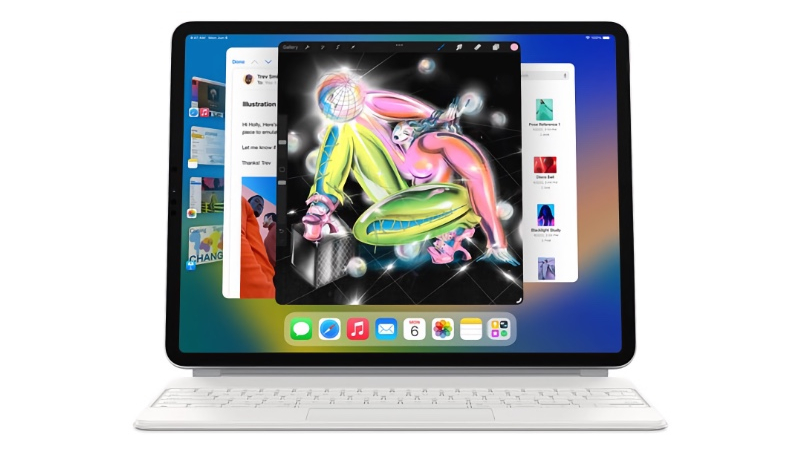Apple’s software engineering chief Craig Federighi spoke with TechCrunch‘s Matthew Panzarino about the new Stage Manager feature for iPad and Mac. During that discussion, he explained more about Stage Manager being limited to M1 iPads.
Stage Manager allows M1 iPad users to open multiple app windows at once overlayed on top of each other, much like a Mac’s Desktop. Stage Manager also provides full external display support on iPadOS for the first time, with up to 6K resolution, allowing users to work with up to four apps on the iPad and up to four apps on the external display simultaneously.
An Apple spokesman last week told Rene Ritchie that Stage Manager “requires large internal memory, incredibly fast storage, and flexible external display I/O, all of which are delivered by iPads with the M1 chip.”
Federighi told Panzarino that the power of the M1 chip ensures that all apps being used in Stage Manager are “instantaneously responsive.”
“It’s only the M1 iPads that combined the high DRAM capacity with very high capacity, high-performance NAND that allows our virtual memory swap to be super fast,” said Federighi. “Now that we’re letting you have up to four apps on a panel plus another four – up to eight apps to be instantaneously responsive and have plenty of memory, we just don’t have that ability on the other systems,” such as the previous-generation iPad Pro.
The iPad Pro with an M1 chip can use up to 16GB of RAM, compared to the 6GB of RAM that was accessible in previous iPad Pro models. The M1 iPad Pro is also specced out as having 2x faster storage and up to 40% faster GPU performance compared to the previous model. An iPad Air with the same M1 chip was released in March 2022.
“We really designed Stage Manager to take full advantage [of the M1 chip],” said Federighi. “If you look at the way the apps tilt and shadow and how they animate in and out. To do that at super-high frame rates, across very large displays and multiple displays, requires the peak of graphics performance that no one else can deliver.”
“When you put all this together, we can’t deliver the full Stage Manager experience on any lesser system,” added Federighi. “I mean, we would love to make it available everywhere we can. But this is what it requires. This is the experience we’re going to carry into the future. We didn’t want to constrain our design to something lesser, we’re setting the benchmark for the future.”
“On the Mac, there are so many different ways to work. Some people use spaces, some people are in and out of Mission Control. Some people are command-tab people, some people like to create a mess, some people clean up their messes and some people use minimization. I mean, there’s no wrong answer here, there are a lot of valid ways to work on the Mac.”


